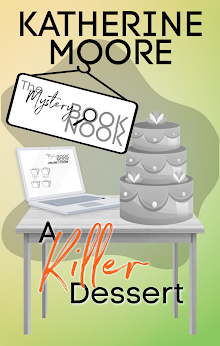 The first book in the series, Guilty Pleasures, is the very first urban fantasy novel I ever read. I LOVED it, despite the cheesy cover. (I looked for an image of that original cover but could not find it, but more about covers in a minute.)
The first book in the series, Guilty Pleasures, is the very first urban fantasy novel I ever read. I LOVED it, despite the cheesy cover. (I looked for an image of that original cover but could not find it, but more about covers in a minute.)I loved that Anita lived in St. Louis and not in the over-used locations of New York and Los Angeles. I loved that Anita initially thought of all the creatures she encountered as monsters. (Well, she was willing to make an exception for Jean-Claude, the vampire master of the city.) Anita had a lot of powers. In addition to being a kick-ass vampire executioner, she could also raise the dead. And the series had a lot of intriguing supporting characters, which helped make her universe seem real.
 I stopped reading the books about the time that Anita got "torn between two lovers." (The other is a werewolf.) The writer was veering off from the kind of crime-type plots you see in other UF books (like Jim Butcher's Harry Dresden/Dresden Files series) and exploring other dimensions of the character. Anita's her character, Laurell K. Hamilton can do what she wants. But I was kind of disappointed. Because I loved Anita just the way she was. Sigh.
I stopped reading the books about the time that Anita got "torn between two lovers." (The other is a werewolf.) The writer was veering off from the kind of crime-type plots you see in other UF books (like Jim Butcher's Harry Dresden/Dresden Files series) and exploring other dimensions of the character. Anita's her character, Laurell K. Hamilton can do what she wants. But I was kind of disappointed. Because I loved Anita just the way she was. Sigh.It wasn't just the stories that evolved, though. Hamilton's publishers put the series' covers through a series of upgrades. When I bought the first book, it had an illustrative cover and the vampire on the cover looked like someone had just drawn a couple of triangular fangs sticking out of his mouth. Seriously. I remember my brother making fun of the cover.
Once the books started to sell--and they've sold a lot, according to Wikipedia, the covers started looking a lot more uptown. check them out.
I like the cover font on the cover to the left but pretty much HATE the imag. the artsy one was the redo around the time the book Obsidian Butterfly came out, or at least, that's the first time I noticed the new covers. I thought they were elegant, very "lit fic" in feel.
I'll have to go back to the series sometime, just to catch up with Anita. I'll always be grateful to Laurell K. Hamilton for introducing me to urban fantasy, which wasn't even really a genre when she started chronicling Anita's adventurs among the undead.







No comments:
Post a Comment